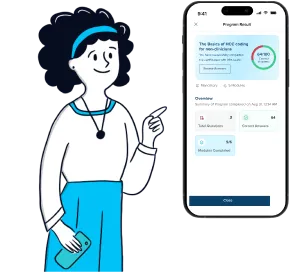Start 14-Day HCC DOC Trial
If you are interested in a trial of our HCC Coding Mobile App, please share your information below and we will respond right away.
Risk adjustment is hard.
Meet your AI copilot.
Overwhelmed clinicians. Missed diagnoses. Disconnected systems. Compliance concerns. Inaccurate RAF scores.
We tackle all of it, so you don’t have to.
We partner with leaders committed to HCC accuracy and value-based care








DoctusTech AI Copilot
=
Customized HCC training for each clinician
+
AI compliance on every note
+
One-click access from your EMR
The DoctusTech ecosystem is designed to work together

The DoctusTech ecosystem is designed to work together

Customized education

Pre-chart planning

AI co-pilot
Writes directly back into the progress note.

Actionable insights

AI Compliance
Enables coding teams to 3x output.


Customized education
Physicians get trained with tailored content to their strengths and weaknesses.
Pre-chart planning
Enable back office staff to support care gap closure with daily huddle forms.


AI co-pilot
Launches directly out of your native EMR.
Writes directly back into the progress note.
AI Compliance
Reads each note for compliance.
Enables coding teams to 3x output.


Actionable insights
Gain real-time visibility into documentation trends and reports at both the provider and patient levels.

HCC learning app
- Available on mobile and web.
- Flexible learning pathways for different stages of your VBC journey.
- Clinicians earn up to 25 hours of CME credits per year.

HCC patient diagnosis assist platform
- Integrated into 70+ major EMRs
- Aggregates payer, specialty, and hospital data
- Automates chart review and ensures documentation integrity
Smarter solutions for HCC success
Smarter solutions for HCC success

HCC learning app
- Available on mobile and web.
- Flexible learning pathways for different stages of your VBC journey.
- Clinicians earn up to 25 hours of CME credits per year.


HCC patient diagnosis assist platform
- Integrated into 70+ major EMRs.
- Aggregates payer, specialty, and hospital data.
- Automates chart review and ensures documentation integrity.
DoctusTech customer’s results after 6 months


30% increase in RAF accuracy

2.5 hours saved per clinician on documentation

92% Chronic HCC Recapture Rate
Seamless integration with 70+ major EMRs.

9 out of 10 clinicians prefer DoctusTech for HCC Coding


This app has been an eye-opener to say the least. I did not think anything like this existed. I was initially very skeptical but once I got into it I thought this was one of the best tools for HCC coding.


Commitment to best-in-class security controls.




